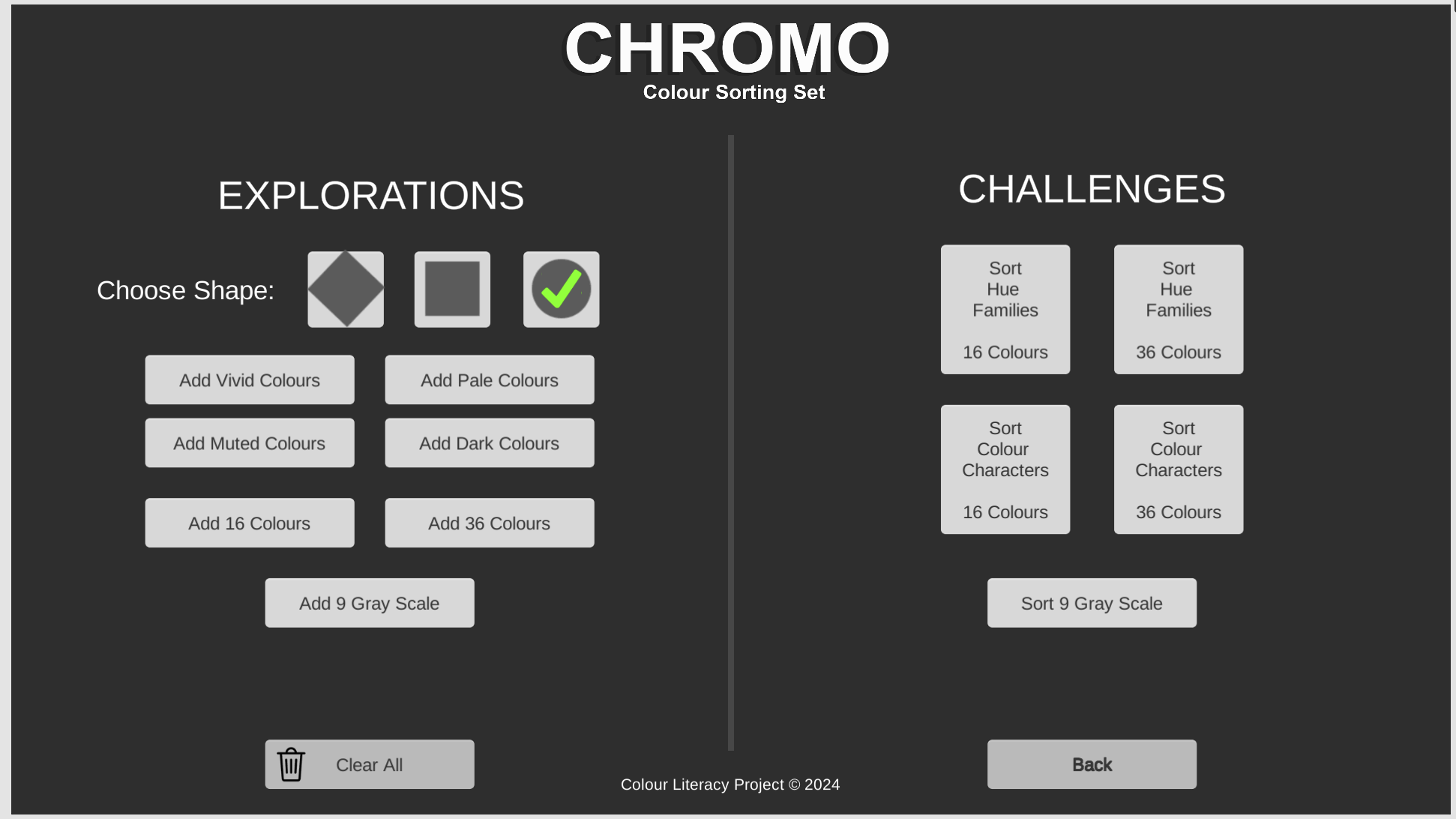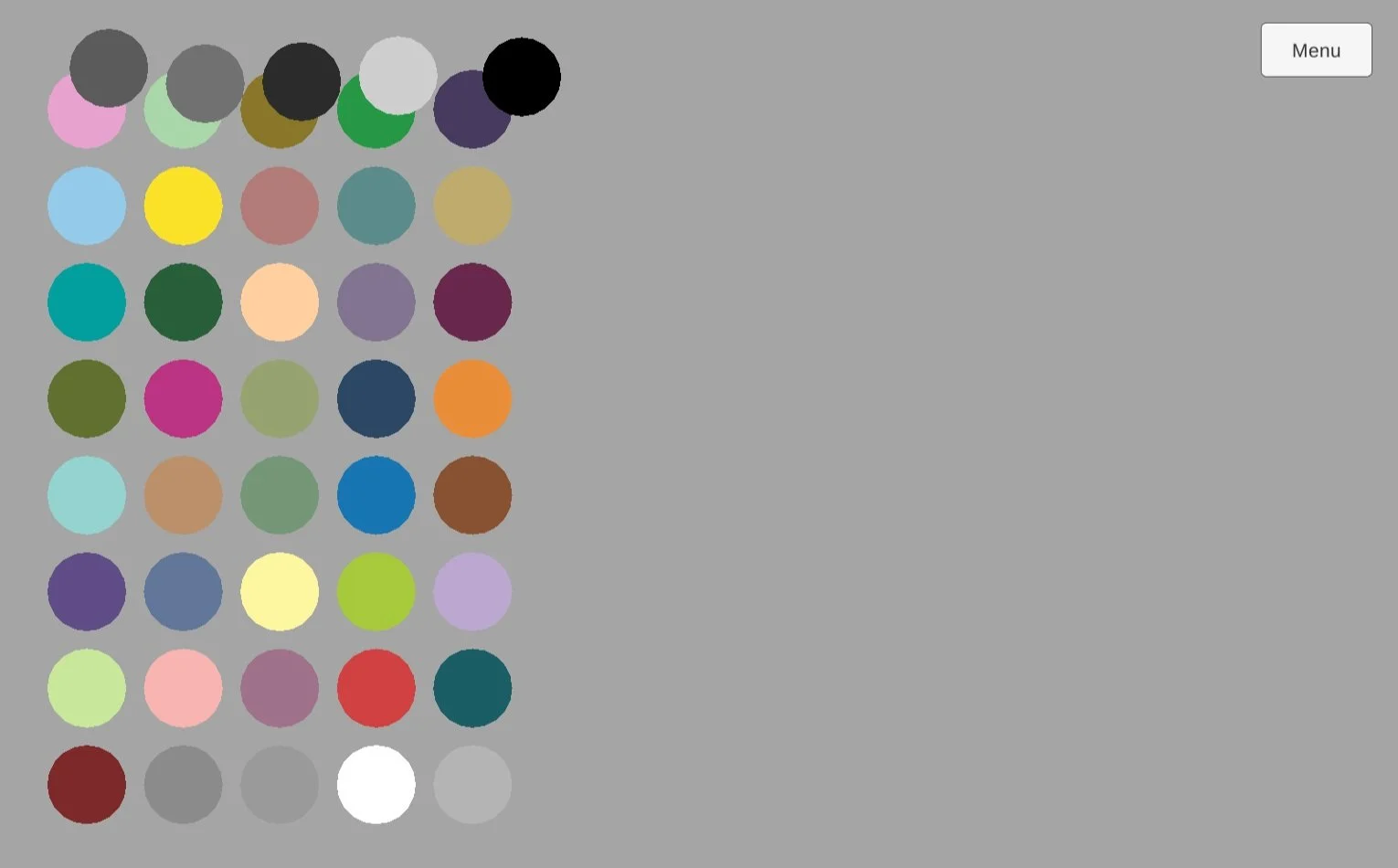Free sort
DESCRIBING COLOURS:
Expanded hue families
Sort coloured tiles any way you wish!
Details:
All ages
Time: 10 minutes
Learning Outcome: Start to notice relationships between colours
Materials:
Background - Sorting Introduction
Coloured tiles: physical, or online at: https://5drealities.itch.io/colour-lit-sorting (CHROMO)
Instructions:
Figure 1. Chromo Colour Sorting Set Menu page.
To use the online sorting set, click on Run game. This will bring up the menu page. See Figure 1.
Choose one of the Explorations shapes, a diamond, square or circle.
Figure 2. All 36 chromatic coloured tiles in the set displayed in random order.
Click on Add 36 Colours. All the chromatic coloured tiles will then be displayed in random order.
See Figure 2.
Figure 3. Nine achromatic coloured tiles added to the 36 chromatic tiles.
Click on Menu (top right) which takes you back to the Menu page, and click on Add 9 Grey Scale.
You will find that the nine achromatic coloured tiles in the set have been added to the random array. See Figure 3.
Your task is now to arrange these coloured tiles ‘in order’ by moving them into the space on the right. The ordering principle is up to you. The only rules are those you set for yourself.
Take a screen shot or photograph of your arrangement and save it. Then post or send it to your teacher/ workshop leader for display. When all arrangements are on display, students will explain why they arranged the coloured tiles in the way that they did.
To get ready for another exercise, go back to the Menu and click Clear All.
Observations:
It can be expected that certain relationships between the coloured tiles will emerge from people’s sorting, and these can be pointed out and discussed:
There is a fundamental difference between colours that are chromatic and those that are not.
Some colours are related because they have the same hue (i.e. they belong to the same hue family).
Some colours are related because they have the same character – vivid, pale, dark, or muted.






